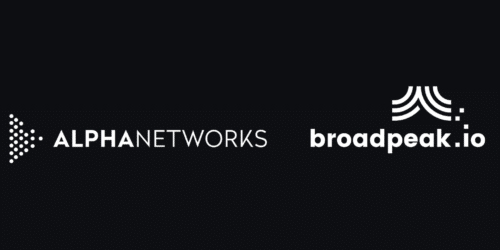Discover how to leverage SSAI from your MediaOps & NetOps environments to enable Dynamic Ad Insertion as a Service.

Creating new revenue streams from DataMiner
Streaming services are shifting to ad-supported models, making monetization with DataMiner a priority for video streaming service providers. This article shows how Broadpeak, Skyline and Mllabs bring Dynamic Ad Insertion (DAI) using SSAI (Server-Side Ad Insertion) as a service into your MediaOps and NetOps environments. You’ll see how this integration simplifies operations, uses audience data for revenue growth, and supports use cases such as live event scaling, channel readiness for Addressable TV, and end-to-end ad revenue assurance.
Why streaming services need ad-based monetization
The streaming industry is now entering a phase where monetization has become the de facto business model to drive profitability. Whether you are a Content Provider, an Aggregator, or a Telecom Operator, this transformation is impacting all streaming video service providers.
Migration towards an ad-supported model can be disruptive. As this transformation spans the entire media delivery chain, it impacts all components, including content preparation, origination, delivery, and the end-user client.
From a solution standpoint, it adds a new vertical based on an Ad Tech stack, which can be more or less sophisticated depending on the use case. Ultimately, if your services are already operated in DataMiner, being able to enable monetization as a service, from the same environment, will let you benefit from an immediate TTM.
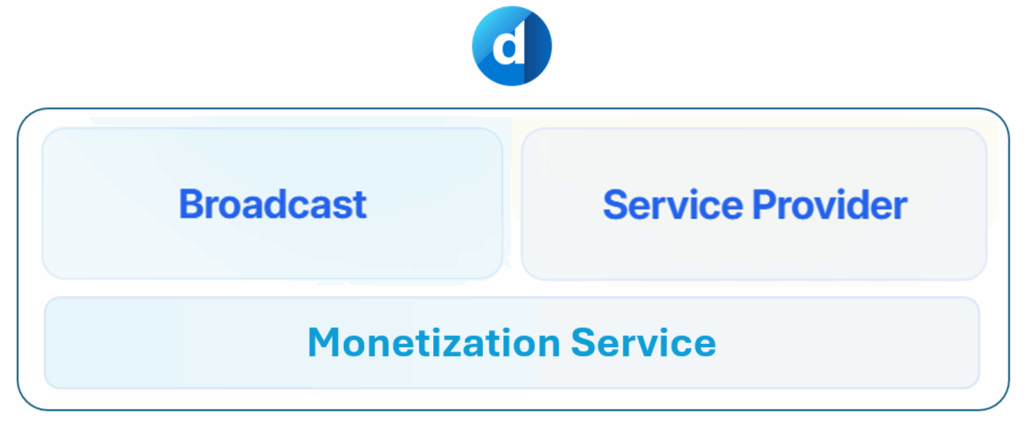
Simplifying SSAI and Ad Tech Operations in DataMiner
Building a comprehensive Ad Tech stack from scratch can be challenging. Depending on the application, you may have to consider a whole ecosystem, including SSAI, Ad Proxy, Ad Server, and SSP, preferably pre-integrated, already deployed, and running as cloud services.
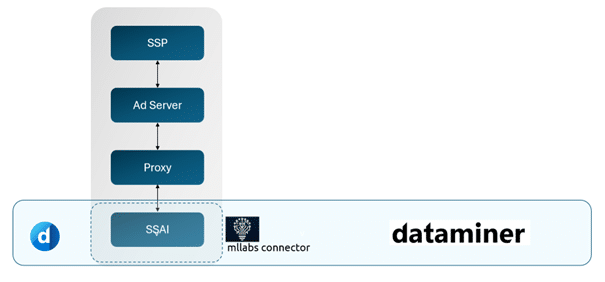
From an operations perspective, having duplicated service definitions can add significant overhead. Likewise, running with isolated components can lead to challenging situations.
With the Mllabs connector integrated through the backend API, any DataMiner user can now seamlessly benefit from SSAI service provisioning, updates, monitoring, and alerting, all from a single UI and with a streamlined user experience.
Although only the broadpeak.io SSAI scope is part of the DataMiner UX, because it is already integrated and deployed with the other Ad Tech components, publishers instantly benefit from a field-proven monetization solution and immediate TTM.
Using audience data to drive ad revenue
In any monetization business model, one of the first KPI driving your ROI is going to be related to audiences. Finding the content and services attracting the highest audience can be challenging.
Streaming audiences no longer follow fixed patterns. Changes are permanent and sometimes happen across platforms, services, streaming workflows, watch time, devices, and user profiles. Ultimately, aggregated analytics data serve as the ideal starting point for identifying what to focus on. The following analytics dashboard illustrates the type of data that can be used to prepare projections for ad inventory sales.
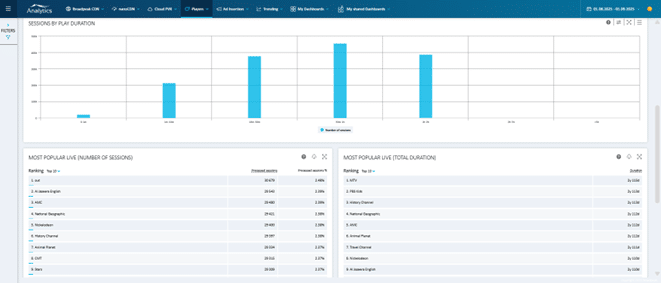
Example of monetization use cases enabled by Broadpeak, Mllabs, and Skyline
In the next section, we are going to review four use cases which can be enabled with this solution and the support of Mllabs integration services.
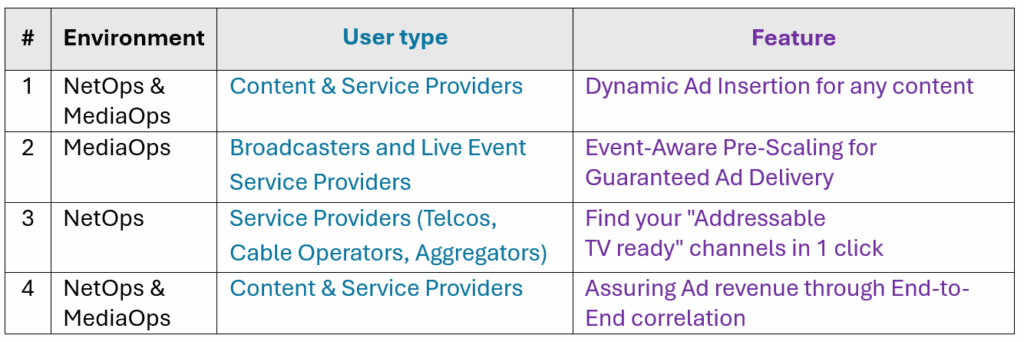
Use Case 1: Dynamic Ad Insertion for live and on-demand content
broadpeak.io is a SaaS API platform widely used for content personalization, monetization, and delivery. For content monetization specifically, it provides a powerful SSAI (Server-Side Ad Insertion) engine capable of doing:
- ad insertion
- ad replacement (e.g., Addressable TV)
- ad tracking (CSAT or SSAT)
- ad preparation (creative transcoding)
DAI services can be applied to a comprehensive set of streaming workflows (DASH, HLS), including but not limited to:
- Live manifests: Live, Start-Over, TimeShift
- Closed manifests: VOD, Catchup / Replay, cPVR
Although widely used for TV services, radios are also supported.
The platform drives and manages ad processing at scale for a wide range of streaming service providers, including but not limited to the following types:

Rather than having to manage two separate accounts on DataMiner and broadpeak.io, Mllabs is providing a connector based on the broadpeak.io API. This connector can be found in the DataMiner services Catalogue and can be used seamlessly, like other integrated media services.
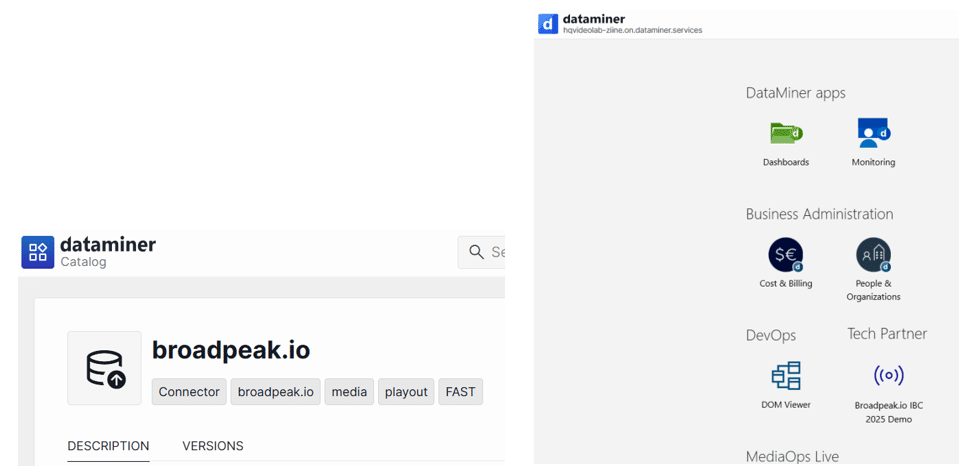
Once deployed, users have access to a new, custom GUI that enables the creation and provisioning of Dynamic Ad Insertion services. The following screenshots illustrate UX examples of what users have access to for creating sources, configuring a workflow, and monitoring DAI services.
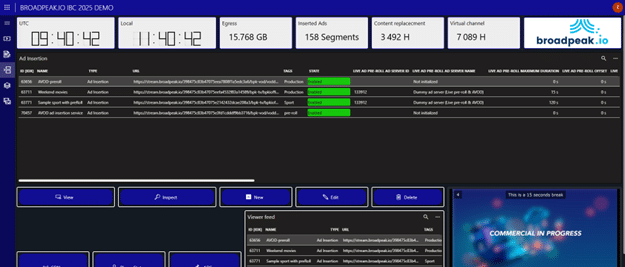
To dive deeper into Service creation and provisioning, you can view the following video showing a concrete example:
The Role of DataMiner
DataMiner Low Code Apps provide broadpeak.io users with the ability to customize the user interface of their ad insertion setup entirely. Ensuring it can deliver exactly to their requirements, both today and in the future.
Use Case 2: Event-Aware Pre-Scaling for Guaranteed Ad Delivery
Broadcasters and Live Event Service Providers
The broadpeak.io SaaS is hosted in a tier one public cloud environment (AWS) and natively provides autoscaling capabilities. This means that the session processing ramp-up will increase rapidly over time to accept new incoming session requests.
For certain live events, however, having the information in advance can add an extra layer of safety to ensure the cloud cluster is pre-scaled before the event begins. This planned feature will ensure all incoming requests can be served even if the ramp-up is very steep.
Typical types of content & events which can benefit from such capabilities are:
- Live sports (popular games, cup finals, …)
- News (e.g. political speech, crisis)
The idea is to leverage an enterprise-level API, allowing users to provision a pre-scaling slot with the following type of information triggers from the DataMiner Media Event Planning:
- Service Id (Live HLS or DASH stream)
- Start time
- End time
- Number expected concurrent sessions
The Role of DataMiner
By complementing native autoscaling with event-driven pre-scaling, DataMiner ensures that SSAI resources are ready to meet peak demand. This guarantees uninterrupted ad delivery, at scale, from the very first ad in the very first ad break, and protects revenue opportunities during high-profile live events.
Use Case 3: Find your “Addressable TV-ready” channels in 1 click
Service Providers (Telcos, Cable Operators, Aggregators)
In a typical environment, Tier 1 service providers distribute hundreds of linear channels. With the necessary transition from Linear to Addressable TV, the first question arising is “What channels are monetization ready”?
Identifying which channels have SCTE-35 markers is one of the most essential prerequisites for enabling Addressable TV for a Service Provider. A channel without cue points is way more challenging to monetize.
A channel with spot-level cue points can bring significantly higher ROI and UX. Ultimately, we see that knowing the exact type of signaling embedded in each channel is key to determining the level of ad inventory sales that can be reached and the amount of ad revenue that can be expected.
Once a live channel with markers is identified, the following requirement is to determine the signaling it holds. This tedious work can take hours on a single channel, as the probe must wait for a minimum amount of time to determine that there is no embedded signaling. In other words, with lineups of hundreds of channels, automated scanning and analysis is a must-have.
This automated scanning can be performed at the live source level (link) or directly in the DASH or HLS manifests (link), leveraging probes and/or real-time media flow monitoring (link).
During scanning, as soon as a marker is identified, further analysis is needed to determine whether it is at the break level or spot level. Furthermore, in the case of spot-level and pod-level ad replacement, a specific segmentation type (0x02) can be identified for further readiness analysis.
In the first case, Spot2Spot inventory sale can be considered, in the latter, pod replacement with Clean Back to Live capabilities (see customer example) within the ad break is an option.
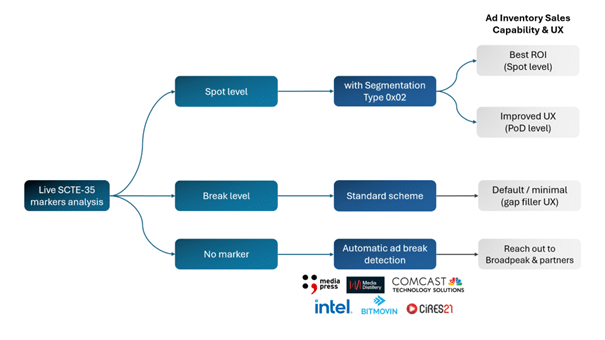
Those markers and tags can then be used to classify channels and display the monetization audit summary as shown in the following dashboard:
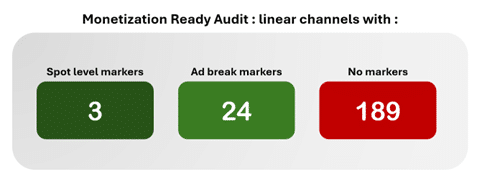
The Role of DataMiner
DataMiner’s value-add is associated with automating the SCTE marker discovery and classification process across vast channel lineups, transforming what was once a tedious, manual task into an efficient, scalable process.
- Automatic detection of channels that include SCTE-35 markers.
- Identify the SCTE-35 signaling type to classify channels as suitable for break-level or spot-based ad insertion.
Use Case 4: Assuring Ad revenue through End-to-End correlation
Content & Service Providers
When monetizing live streams with Addressable TV workflows, any under-performance in terms of ad insertions or ad replacements (typically counted in CPM) is problematic. In today’s ad-supported models, the revenue can entirely come from ad inventory sales.
Identifying where, in the media distribution video plane, the issue is coming from, whether it is a recurring issue or a one-off, and which component was faulty, is essential with hundreds of thousands if not millions of concurrent viewers for the most significant events, having the highest level of confidence and being able to identify the root cause of issues directly impacting business quickly is essential.
In revenue-sharing models between broadcasters and distributors (e.g., Telco), those logs are essential to clarify the scope of responsibilities and direct investigation efforts to the right technical team (Operations, Support, DevOps, etc.). With timing and error type correlation, the system can immediately direct Operations to the proper scope, providing a predefined set of checks and recommendations.
The following dashboard is an example of what would be relevant in this specific scenario type.
Live stream health monitoring (filter on SCTE-35 cue points)

The Role of DataMiner
DataMiner creates clear value for service providers by continuously monitoring incoming content to ensure required markers are present. It is crucial to avoid unexpected marker loss and the associated revenue potential or even contractual compliance issues with the content provider. Monitoring this slot volume is also a must for all correlation between variations in ad insertion volume and changes in the incoming available volume of slots.
Key takeaways: How DataMiner boosts monetization
The Role of DataMiner
This is where DataMiner creates clear value for service providers. By automating discovery and monitoring across vast channel lineups, it transforms what was once a tedious, manual task into an efficient and scalable process.
Initial enablement
- Automatically detect channels that include SCTE-35 markers.
- Identify the SCTE-35 signaling type to classify channels as suitable for break-level or spot-based ad insertion.
Ongoing operations
- Continuously monitor incoming content to ensure required markers are present.
- Critical for contractual compliance.
- Prevents unexpected marker loss, which would directly impact ad revenue.
- Track actual consumption volumes for channels with ad insertion capabilities — both individually and in aggregate — to provide valuable insights into the total monetization potential and its distribution across the channel lineup.
- Monitor the ad insertion servers themselves to ensure that the available slot volume can be fully utilized.
Track how the actual inserted ad volume compares to the total available slot volume, providing service providers with relevant insight into projected performance.
Skyline, Broadpeak and Mllabs are giving DataMiner users new capabilities to grow their revenue: the capability to monetize content, services and audiences right from their MediaOps and NetOps native environments.
Although this paper focuses only on monetization, other media services, part of the broadpeak.io SaaS platform, can be leveraged, including:
- CDN delivery as a Service (ASCDN)
- Player Analytics as a Service (beta)
- Virtual Channel as a Service (VC)
- Content personalization as a Service (CR)
- Content Steering (beta)
If you’d like to see some of these workflows and services in action, you can visit us in Amsterdam at IBC. We’ll be showcasing some of them, and our teams will be happy to jump into any project or answer any questions you may have.

- Booth location: Hall 1.B40
- Showcase information
- Schedule a meeting
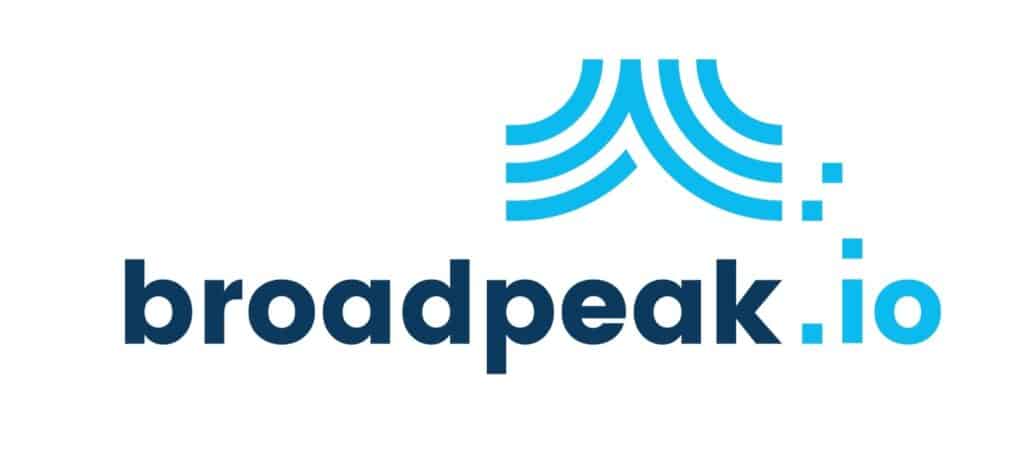
- Booth location: Hall 1.F83
- Showcase information
- Schedule a meeting







